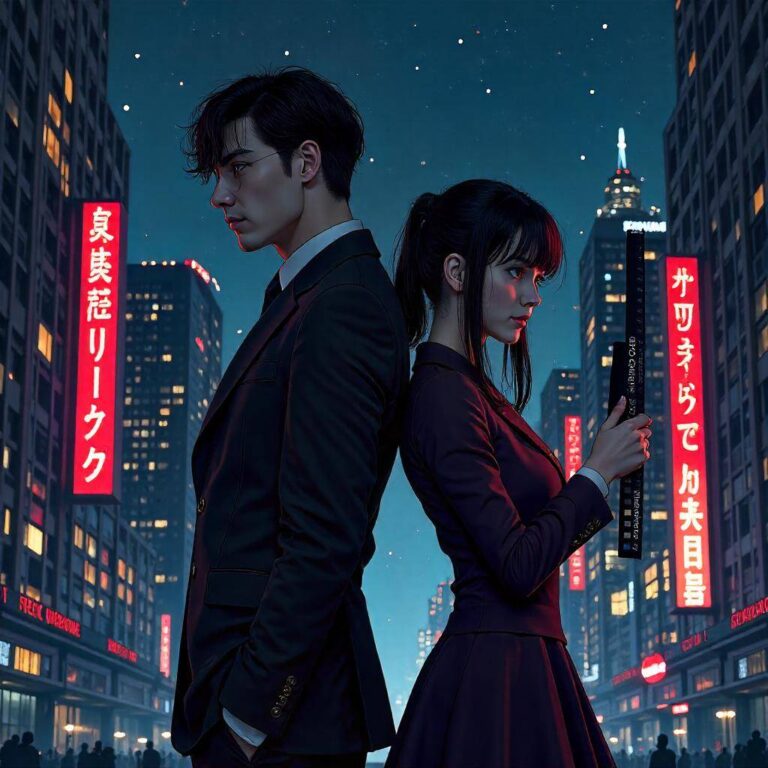Reader’s Question:
Which should I watch first, “The Scarlet Bullet” or “The Scarlet Alibi” from the Detective Conan series?
Understanding the Detective Conan Universe: A Comprehensive Guide to “The Scarlet Bullet” and “The Scarlet Alibi”
Navigating the intricate world of anime, particularly within long-running series like Detective Conan, can be quite a
challenge. With numerous spin-offs, movies, and episodes, discerning the appropriate viewing sequence can enhance your understanding and enjoyment of the narrative. In this article, we will delve into two specific entries of the franchise: “The Scarlet Bullet” (“緋色の弾丸”) and “The Scarlet Alibi” (“緋色の不在証明”). The question posed by a reader—whether to watch “The Scarlet Bullet” or “The Scarlet Alibi” first—serves as a perfect gateway into a deeper exploration of the series.
Background Context: The Detective Conan Phenomenon
Detective Conan, known in Japan as “名探偵コナン” (Meitantei Konan), is a Japanese manga series written and illustrated by Gosho Aoyama. First serialized in 1994, it has since transcended its original medium to become a staple of anime television, films, and even video games. The series follows Shinichi Kudo, a high school detective transformed into a child after being poisoned. Under the guise of Conan Edogawa, he continues to solve cases while seeking a cure for his condition. The franchise has garnered a significant following, characterized by its well-crafted mysteries, compelling character development, and occasional forays into emotional storytelling. With over 1000 episodes and numerous films, the narrative continues to evolve.
Understanding the Films: The Scarlet Alibi and The Scarlet Bullet
Before diving into the viewing order, let’s examine the two films in question.
The Scarlet Alibi (緋色の不在証明)
First released as a theatrical film, “The Scarlet Alibi” serves as a compilation of significant events involving the Akai family, which includes key character segments related to the overarching narrative. This film is particularly important because it encapsulates the backstory and motivations of characters such as Tooru Amuro, Akai Shuichi, and his family. The emotional weight and character arcs presented in “The Scarlet Alibi” provide viewers with a foundation to understand the relationships and tensions that unfold in “The Scarlet Bullet.” The film emphasizes themes of loyalty, betrayal, and familial bonds, enriching the viewer’s experience of the larger narrative.
The Scarlet Bullet (緋色の弾丸)
In contrast, “The Scarlet Bullet” presents a standalone story that builds upon the groundwork laid by previous installments, including “The Scarlet Alibi.” It introduces new mysteries while simultaneously addressing ongoing plot threads related to the Akai family and the Black Organization, a central antagonist group in the series. The narrative tension in “The Scarlet Bullet” draws heavily on the relationships established in “The Scarlet Alibi.” By introducing high-stakes scenarios involving the characters we have come to know, it focuses on action and suspense, pushing the franchise into thrilling territories.
Legal and Ethical Considerations in the Anime Industry
As a university psychology major working part-time at a judicial scrivener’s office, I find it necessary to consider the legal and ethical dimensions of media content. The anime industry is rife with complex licensing negotiations, copyright concerns, and ethical storytelling practices. For instance, both “The Scarlet Alibi” and “The Scarlet Bullet” must navigate character rights and intellectual property laws. Bit by bit, the industry has adapted to a more globalized audience, resulting in translations and adaptations that require careful adherence to copyright standards. Furthermore, ethical storytelling practices are increasingly coming under scrutiny. As fans of Detective Conan, we must question the narratives surrounding crime and justice presented in the series. How are justice and morality depicted? What cultural implications do these portrayals contain? In a genre often romanticizing detective work, it is crucial to maintain a balance between entertainment and responsible representation.
Psychological Aspects of Character Development
From a psychological perspective, character development in Detective Conan is rich and diverse. Characters like Shinichi Kudo and the members of the Akai family represent complex psychological profiles influenced by experiences, relationships, and societal expectations. For example, Akai Shuichi embodies characteristics of the archetypal hero, plagued by a shadow of loss and responsibility. His stoicism often masks deeper emotional turmoil, a common theme in psychological narratives. Conversely, characters such as Tooru Amuro showcase traits of loyalty and internal conflict as he navigates his duality as both a detective and an undercover agent for the Black Organization. The depth of these characters allows viewers to connect with their journeys on an emotional level, making them relatable and compelling. Understanding these psychological dynamics can enrich our viewing experience and foster discussions on character motivations and growth.
Storytelling Ethics and Cultural Impact
Detective Conan’s storytelling is not without its ethical dilemmas. The series often tackles serious themes such as crime, morality, and justice. As viewers, we must analyze these themes critically. Are the actions of the protagonists justified? How are criminal acts portrayed? And do the narratives reinforce or challenge societal norms? Culturally, Detective Conan has had a significant impact on how detective stories are perceived in Japan and beyond. The franchise has popularized the detective genre in anime, influencing countless creators and viewers. The emphasis on logic, deduction, and moral reasoning has sparked interest in critical thinking and problem-solving skills among its audience. However, it is essential to recognize the potential pitfalls of glorifying crime-solving in an entertainment context. The ethical portrayal of detectives and criminal actions can shape public perceptions of law enforcement and justice systems.
Actionable Advice for Anime Fans and Creators
For fans of Detective Conan and anime enthusiasts alike, there are several actionable insights to consider: 1. Watch in Order: Begin with “The Scarlet Alibi” to gain a deeper appreciation of character motivations and relationships before proceeding to “The Scarlet Bullet.” This sequential viewing will provide you with a clearer narrative structure and richer context. 2. Engage Critically: When watching anime, especially series that deal with crime and morality, engage critically with the content. Consider how the portrayals align with real-world issues and ethical standards. 3. Explore Character Depth: Take time to analyze character motivations and psychological profiles. Understanding the underlying psychological dynamics can enhance your viewing experience and foster engaging discussions. 4. Support Ethical Practices: As consumers of media, support creators and studios that prioritize ethical storytelling and representation. Acknowledge the impact of your viewing choices on shaping the industry. 5. Join Discussions: Participate in discussions or forums where you can share insights and perspectives with fellow fans. Engaging with others enhances your appreciation for the intricacies of storytelling.
Final Thoughts: A Personal Reflection
As I reflect on my own experiences with Detective Conan, I remember the excitement of piecing together clues and unraveling intricate plots. The series has not only entertained me but also sparked my interest in psychology and law. The blend of these fields within the narrative offers a unique lens through which to view the characters’ struggles and triumphs. In conclusion, whether you choose to watch “The Scarlet Alibi” or “The Scarlet Bullet” first, understanding the narrative context and character dynamics will undoubtedly enrich your experience. I invite you to share your own thoughts and experiences with Detective Conan. How have the themes resonated with you? What insights have you gained from the characters? Engage in the conversation and let us explore the depths of this beloved series together.



